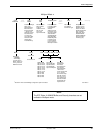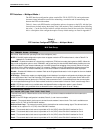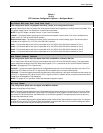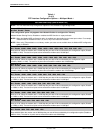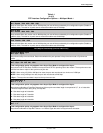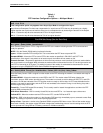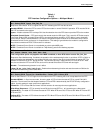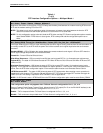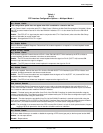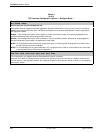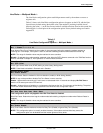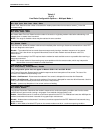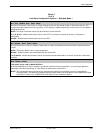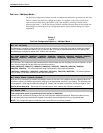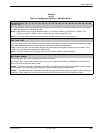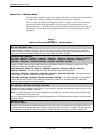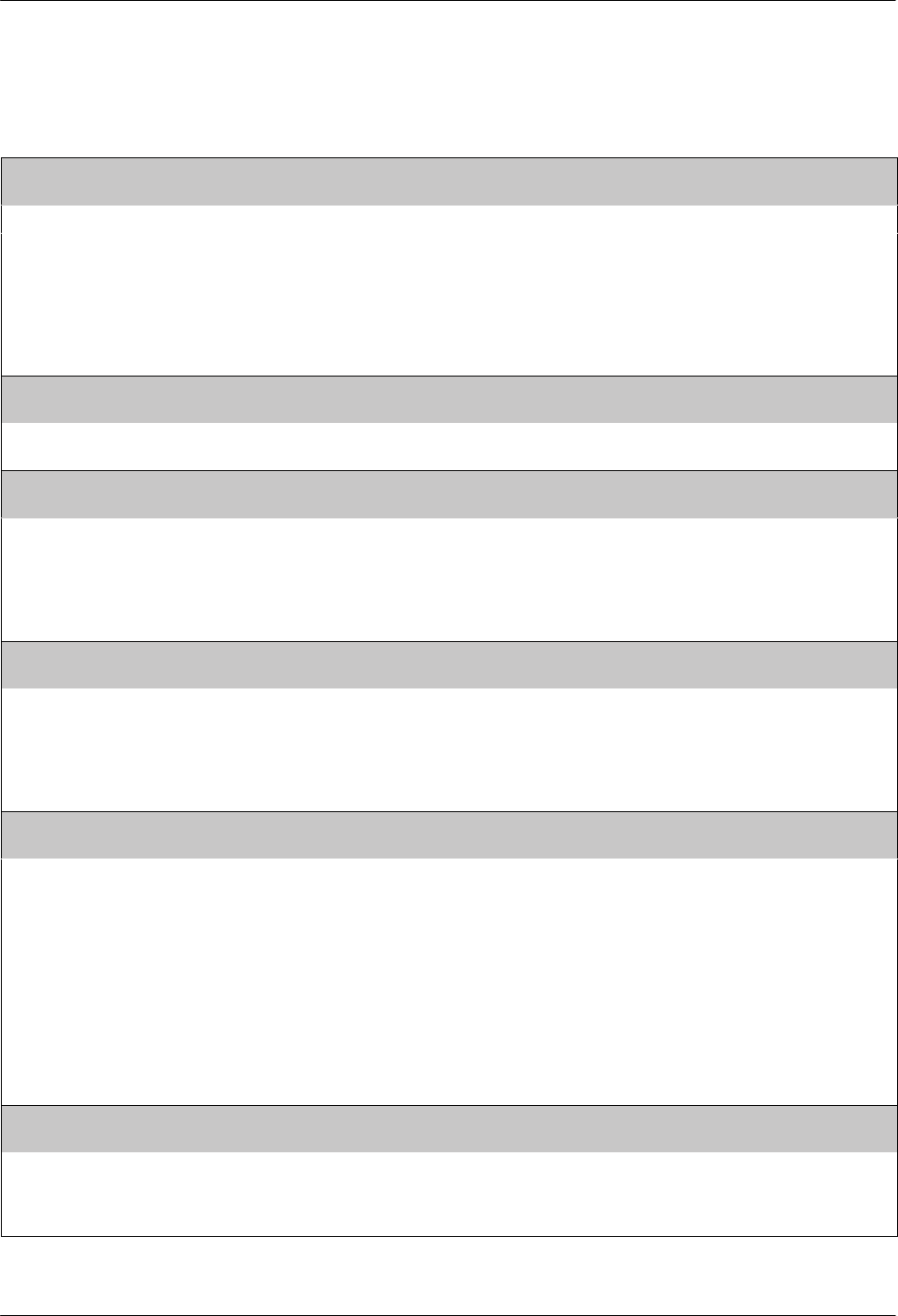
DCP Configuration
4-173920-A2-GN31-30 November 1996
Table 4-1
(8 of 9)
DTE Interface Configuration Options — Multiport Mode l
CT111 Control: Disable
Nxt Disable Enable
This configuration option does not appear when V.34 is enabled for a leased or dial line.
CT111 Control. Used in conjunction with CT111 Rate Control. (Refer to the Mux Sub-Group section of this table.) Allows
the DTE to control modem rate via Pin 23 of the EIA-232-D interface. CT111 is also known as CH on the EIA-232-D
interface.
Enable – The DTEs CT111 signal may be used in conjunction with CT111 Rate Control (refer to the Mux Sub-Group
section of this table) to control modem rate.
Disable – Disregards the DTEs CT111 signal.
Rcv Remote Loop: Enable
Nxt Enable Disable
Receive Remote Loopback Response. Determines if the modem responds to a request for a remote loopback issued
from a remote modem.
DTE RL (CT140): Disable
Nxt Disable Enable
DTE Remote Loopback. Controls the use of Pin 21 of the EIA-232-D/CCITT V.24 interface by the DTE to initiate a
remote loopback. An Abort command or test time-out ends this test.
Enable – The DTE forces the modem into remote loopback when the signal on Pin 21 (CCITT 140) is turned ON.
Remote Loop ends when the signal is dropped.
Disable – The DTE does not initiate remote loopback in response to the signal on Pin 21.
DTE LL (CT141): Disable
Nxt Disable Enable
DTE Local Loopback. Controls the use of Pin 18 of the EIA-232-D/CCITT V.24 interface by the DTE to initiate a local
loopback. An Abort command or test time-out ends this test.
Enable – The DTE forces the modem into local loopback when the signal on Pin 18 (CCITT 141) is turned ON. Local
loopback ends when the signal is dropped.
Disable – The DTE will not initiate local loopback in response to the signal on Pin 18.
Port TXC Source: Internal
End Internal External
Port Transmit Clock Source. Determines the clock source used to clock transmit data into the port buffer from Pin 2
(TXD) of the EIA-232-D interface. The port buffer is used to compensate for timing differences when a port is connected
via a crossover cable to another modem’s EIA-232-D interface.
Internal
– The data input to the port buf
fer (from Pin 2 of the EIA-232-D interface) is clocked into the buffer using the
modem’s transmit clock. (The modem’s transmit clock is determined by the TX Clock Source configuration option.) Data
is removed from the buffer using this same clock.
External
– The data input to the port buf
fer (from Pin 2 of the EIA-232-D interface) is clocked into the buffer using the
clock source provided on Pin 24 (XTXC) of the EIA-232-D interface. Data is removed from the buffer using the modem’s
transmit clock. (The modem’s transmit clock is determined by the TX Clock Source configuration option.)
NOTE: The port buffer is re-centered each time RTS is turned ON. If there is a lack of clock synchronization, frequent
toggling of RTS will prevent the loss of data due to buffer overflow or underflow.
DTE Alarm Mask: Disable
Nxt Disable Enable
DTE Alarm Mask. Allows you to enable or disable the reporting of DTE alarms (per port) to the front panel and/or NMS.
Enable – No not report alarms.
Disable – Report alarms.



